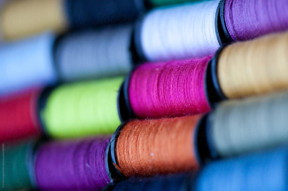

| Date | 18th, Oct 2018 |
|---|
Home > Press > Iran Produces Cooling Fabrics Using Nanotechnology

Abstract: An Iranian knowledge-based company has used nanotechnology to produce nylon fabrics that could cool down human body by reflecting infrared radiation.
Tehran, Iran | Posted on October 17th, 2018
Nanocomposite fabrics have many useful functions including cooling the skin in summer, transferring the body moisture to the environment, rapidly drying textiles, increasing blood circulation, increasing cheerfulness, decreasing vascular cramps, and eliminating the bad smell of sweat and at the same time allowing the skin to continue its natural breathing.
Tehran Zarnakh Company, as the first Iranian company, has managed to produce nylon fabrics called HEALTEX which could reflect infrared radiations, and thus cool down the body.
This product has received a nano-scale certificate from the Iranian Headquarters of Nanotechnology Development this year. These fabrics can reflect infrared radiations and have the ability to retransmit these radiations into the body.
When the infrared radiation penetrates the skin, it contacts the molecules of protein, collagen, fat and water. By creating micrometric fluctuations, a thermal reaction is created which increases the temperature of the body tissue. As blood vessels expand, circulation increases.
Among other products of Zarnakh Company, one could refer to COOLTEX fabrics, which have the ability to rapidly transfer the body moisture to the environment. The presence of micrometric channels in the cross-sectional area of the fibre results in a faster transfer of moisture to a wider level of tissue; therefore, it can increase the evaporation of moisture from the garment.
The heat required for evaporation is provided by the body, and this results in a feeling of dryness and cooling for the person wearing the cooling garment. These features will not be lost by repeated washing of these fibres.
The nanocomposite antimicrobial fibres are among other products of the company. The antimicrobial particles of these threads directly attack the cell wall of the bacterium and DNA, and reduce the possibility of bacteria spreading. In this way, they prevent the creation of odor.
No similar garment is being produced in Iran, and just some prominent companies of the advanced countries are active in this field. Therefore, there seems to be a good market for this product now and in the future.
Zarankh Corporation is a nano-based company participating in the 2018 International Nanotechnology Exhibition, which is currently underway in Tehran and will be open to visitors until October 16.
####
For more information, please click here
Contacts:Iran Front PagePhone: 00982177528888
Copyright © IFP News
If you have a comment, please Contact us.
Issuers of news releases, not 7th Wave, Inc. or Nanotechnology Now, are solely responsible for the accuracy of the content.
News and information
![]() Scientists unravel 'Hall effect' mystery in search for next generation memory storage devices August 19th, 2022
Scientists unravel 'Hall effect' mystery in search for next generation memory storage devices August 19th, 2022
![]() Researchers design new inks for 3D-printable wearable bioelectronics: Potential uses include printing electronic tattoos for medical tracking applications August 19th, 2022
Researchers design new inks for 3D-printable wearable bioelectronics: Potential uses include printing electronic tattoos for medical tracking applications August 19th, 2022
Announcements
![]() Scientists unravel 'Hall effect' mystery in search for next generation memory storage devices August 19th, 2022
Scientists unravel 'Hall effect' mystery in search for next generation memory storage devices August 19th, 2022
![]() Researchers design new inks for 3D-printable wearable bioelectronics: Potential uses include printing electronic tattoos for medical tracking applications August 19th, 2022
Researchers design new inks for 3D-printable wearable bioelectronics: Potential uses include printing electronic tattoos for medical tracking applications August 19th, 2022
![]() Visualizing nanoscale structures in real time: Open-source software enables researchers to see materials in 3D while they're still on the electron microscope August 19th, 2022
Visualizing nanoscale structures in real time: Open-source software enables researchers to see materials in 3D while they're still on the electron microscope August 19th, 2022
Textiles/Clothing
![]() Protective equipment with graphene nanotubes meets the strictest ESD safety standards March 25th, 2022
Protective equipment with graphene nanotubes meets the strictest ESD safety standards March 25th, 2022
![]() Polymer fibers with graphene nanotubes make it possible to heat hard-to-reach, complex-shaped items February 11th, 2022
Polymer fibers with graphene nanotubes make it possible to heat hard-to-reach, complex-shaped items February 11th, 2022
![]() Flexible material shows potential for use in fabrics to heat, cool July 3rd, 2020
Flexible material shows potential for use in fabrics to heat, cool July 3rd, 2020
Events/Classes
![]() Could quantum technology be New Mexico's next economic boon? Quantum New Mexico Coalition aims to establish state as national hub April 1st, 2022
Could quantum technology be New Mexico's next economic boon? Quantum New Mexico Coalition aims to establish state as national hub April 1st, 2022
